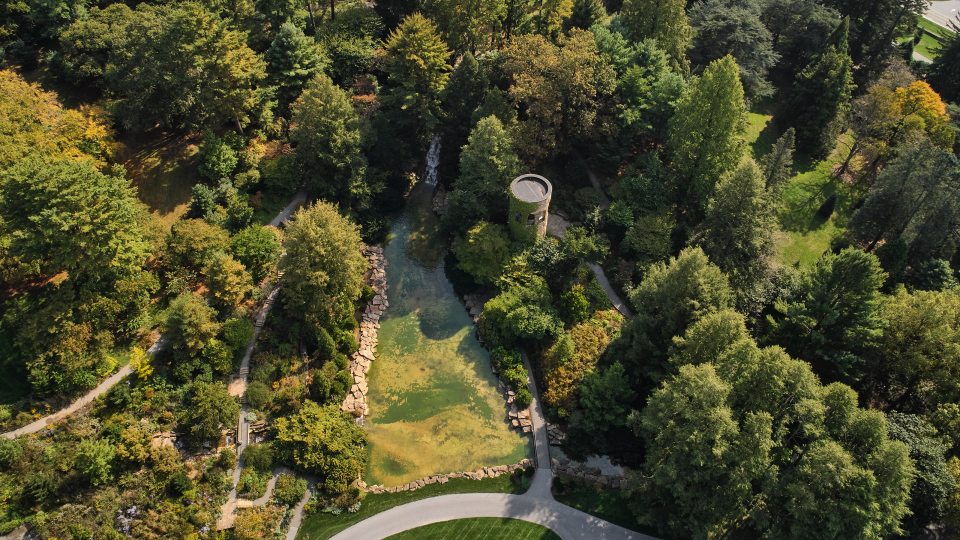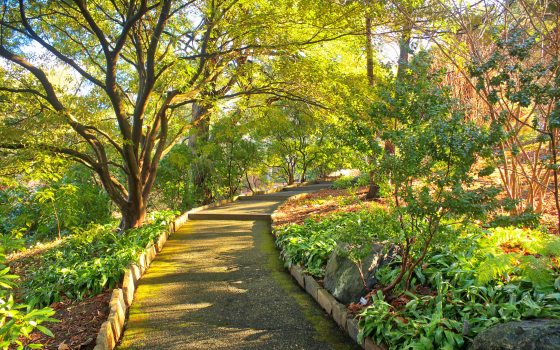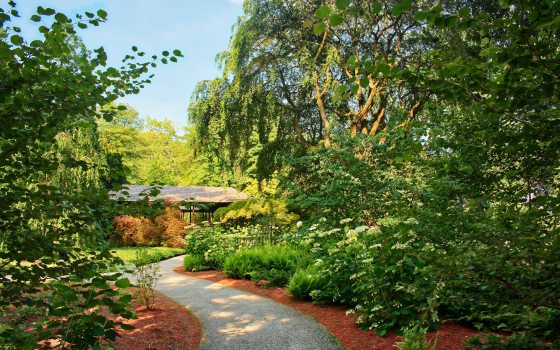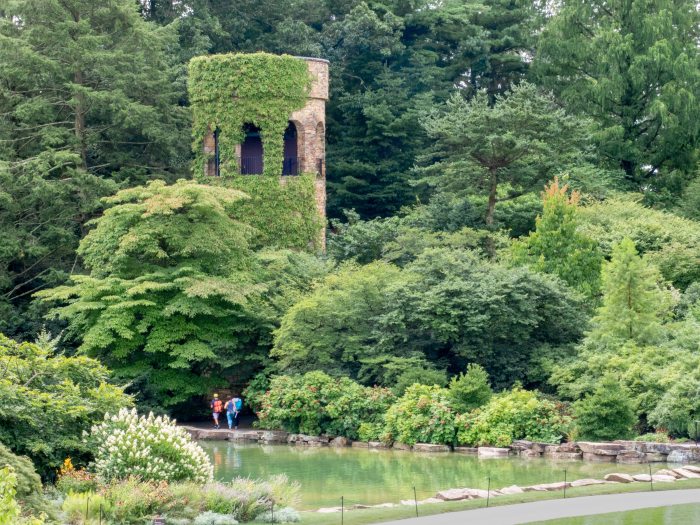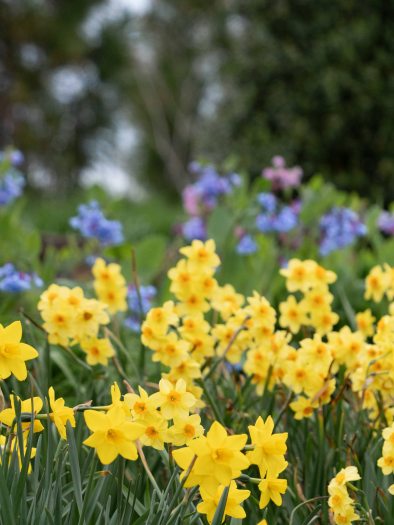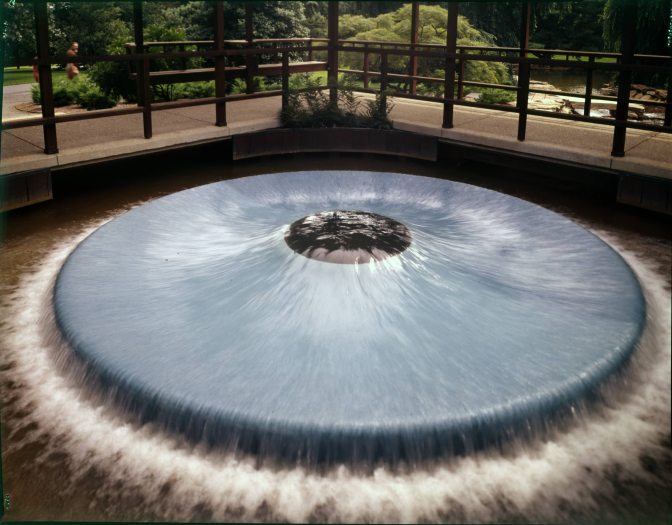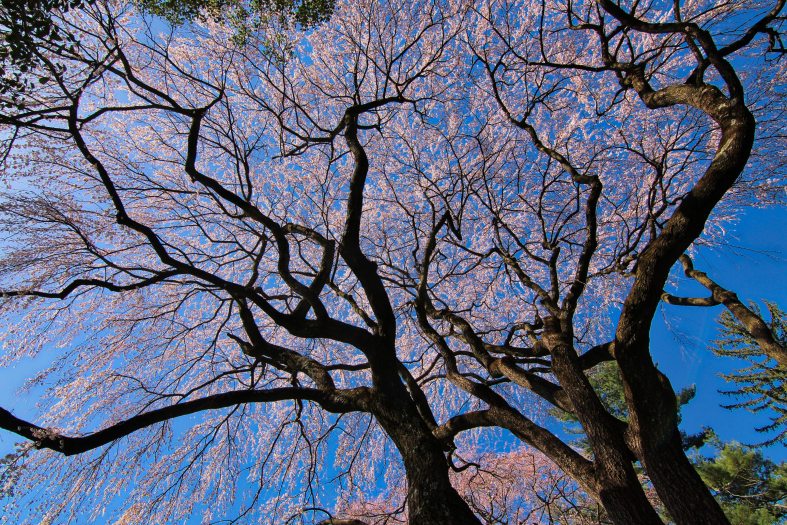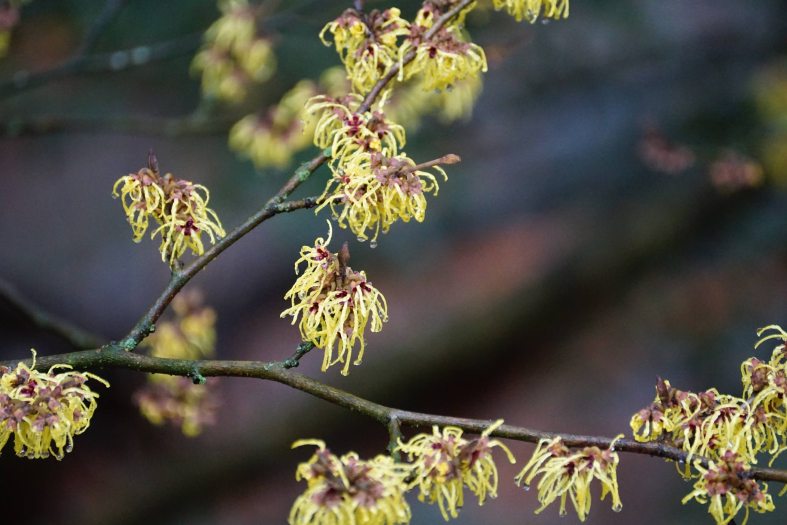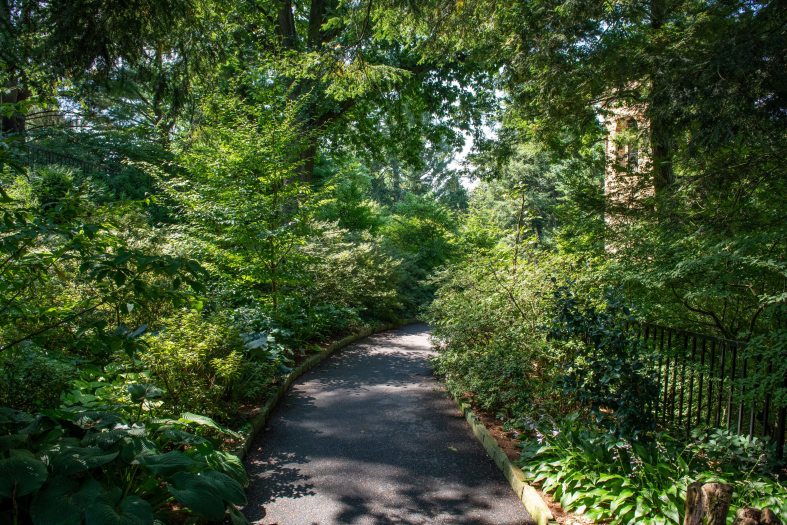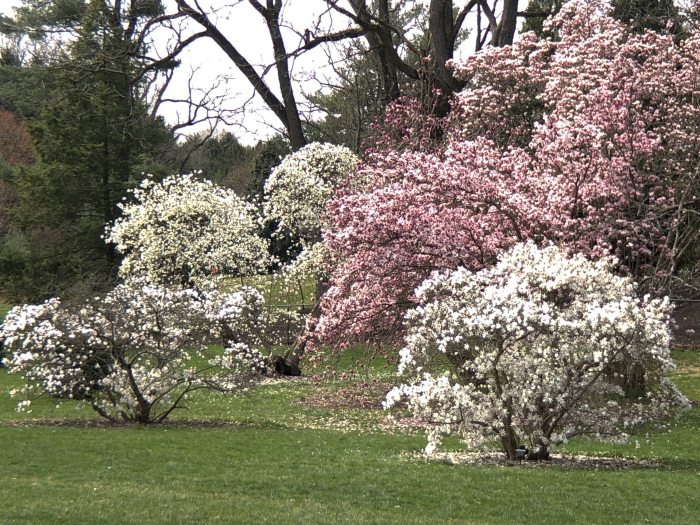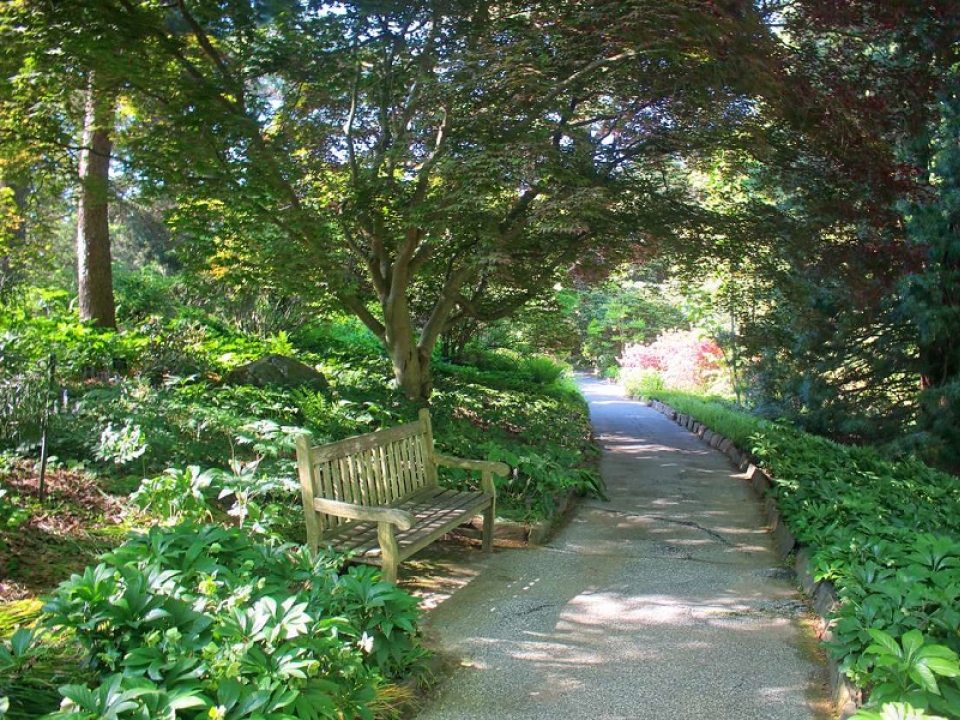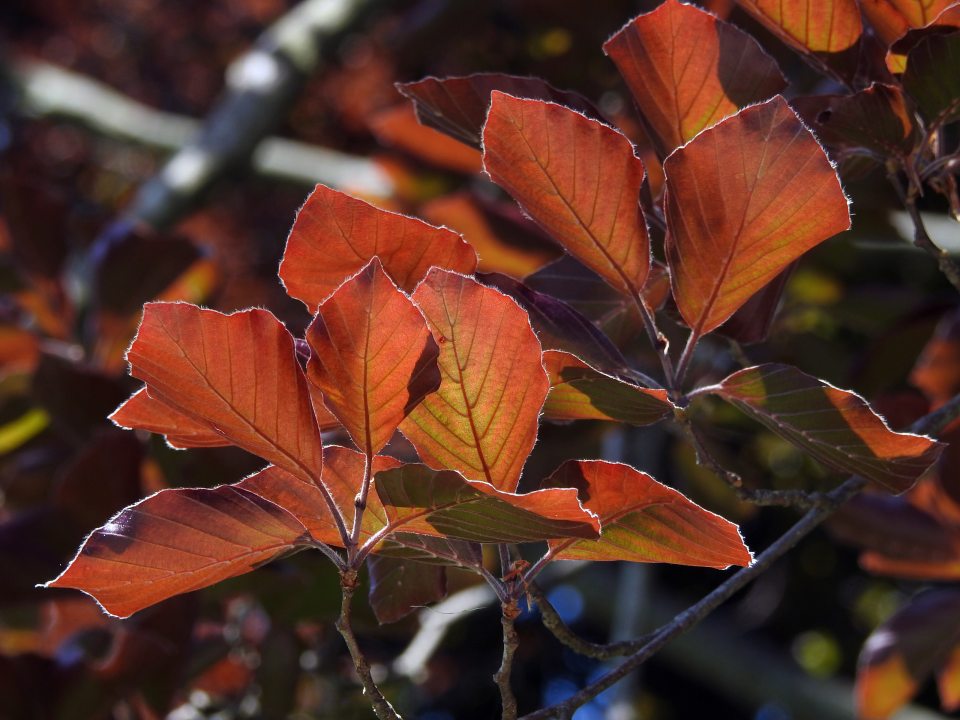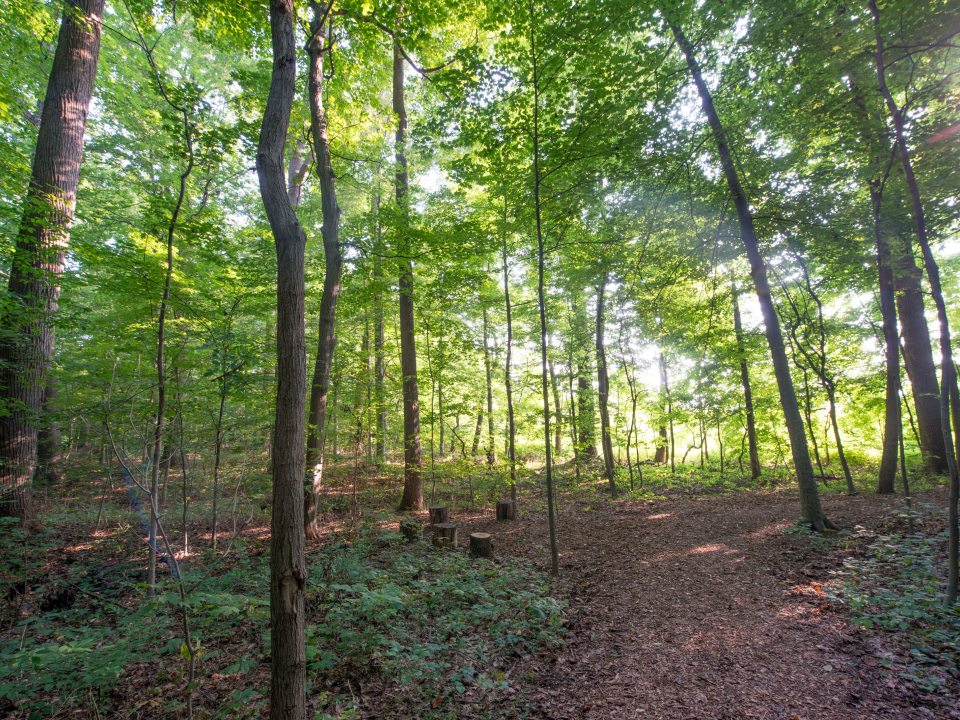The Chimes Tower District provides guests with a thrilling and varied garden experience, including a stunning, four-season hillside of rare, expertly edited plants; a historic bell tower anchored on a 50-foot waterfall; sweeping lawns carpeted in early spring bulbs, and a celebrated collection of award-winning trees—all within view of our majestic Main Fountain Garden.
About This District
Originally designed as an arresting backdrop for the Main Fountain Garden, the Chimes Tower District is now a series of standout gardens and water features that warrant more than just a passing glance. The Hillside Garden features an enviable roster of rare and unique plants, thriving harmoniously throughout the sun-dappled slopes. At the crest of the hill, Oak and Conifer Knoll boasts an array of celebrated tree specimens, with some planted during founder Pierre S. du Pont’s time. The Eye of Water, Pear-Shaped Basin, and Waterfall—all originally part of the gravity-fed pump and reservoir system that once serviced the Main Fountain Garden—are three unique, and interconnected destinations for your exploration.
